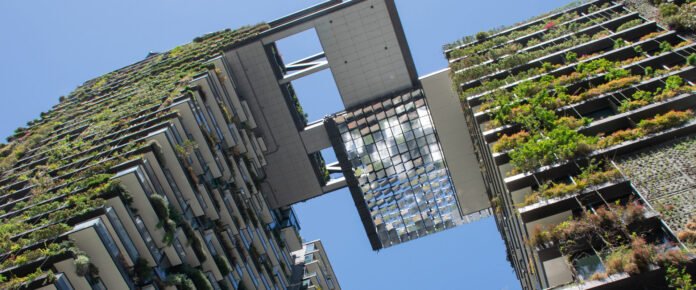As the world grapples with environmental challenges, the construction industry has begun to prioritize sustainable practices in building design and construction. In this article, we will explore the importance of sustainable building solutions and how they integrate with nature to create healthier, more efficient structures.
The Essence of Sustainable Building

Sustainable building, also known as green building, encompasses a range of design and construction practices aimed at reducing environmental impact and promoting resource efficiency. It involves considering the building’s entire lifecycle, from initial planning and design to construction, operation, maintenance, and eventual demolition or deconstruction.
Key Principles of Sustainable Building
Several key principles guide sustainable building practices:
- Energy Efficiency: Design buildings to minimize energy consumption through efficient heating, cooling, lighting, and appliance usage.
- Resource Conservation: Use renewable and recycled materials, reduce waste generation, and conserve water and natural resources.
- Healthy Indoor Environment: Ensure indoor air quality, thermal comfort, and adequate natural light to promote occupant health and well-being.
- Site Sustainability: Protect natural habitats, preserve open space, and minimize environmental disturbance during construction.
- Resilience and Adaptability: Design buildings to withstand climate change impacts and accommodate future needs and changes.
Integrating Nature into Design
Nature-inspired design principles play a crucial role in sustainable building solutions, fostering harmony between the built environment and the natural world. Here are some ways to integrate nature into building design:
Biophilic Design
Biophilic design seeks to connect building occupants with nature by incorporating natural elements, patterns, and materials into the built environment. This can include features such as indoor plants, natural lighting, views of nature, and natural materials like wood and stone.
Passive Design Strategies
Passive design utilizes natural processes such as solar radiation, natural ventilation, and thermal mass to regulate indoor temperatures and reduce energy consumption. By orienting buildings to maximize sunlight exposure and incorporating shading devices, natural ventilation openings, and thermal insulation, passive design reduces reliance on mechanical heating and cooling systems.
Sustainable Landscaping
Landscaping plays a vital role in sustainable building solutions, contributing to biodiversity, stormwater management, and aesthetic appeal. Sustainable landscaping practices include native plantings, rain gardens, permeable pavements, and green roofs and walls, which help mitigate urban heat island effects, reduce runoff, and enhance air quality.
Conclusion
Designing with nature is not only beneficial for the environment but also for building occupants and communities. By embracing sustainable practices and integrating nature-inspired design principles, we can create buildings that are not only environmentally friendly but also healthier, more resilient, and more enjoyable to inhabit. Together, let us continue to innovate and design with nature in mind to build a greener, more sustainable future.












